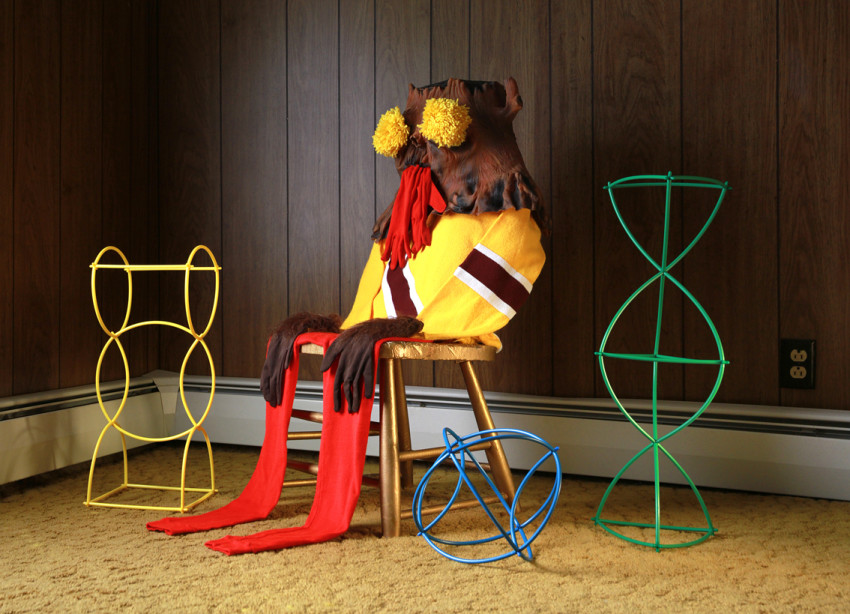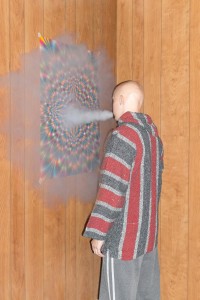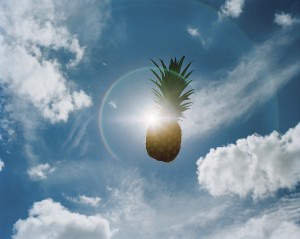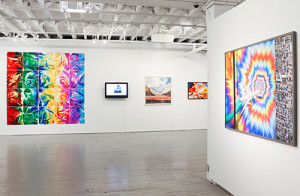Interview with Charlotte Cotton
When I talked to Charlotte Cotton over the phone in-between her busy schedule, she had recently arrived to L.A—a city the renown photography curator considers special for her career which includes a curatorial position at LACMA. Cotton—the Curator-in-Residence at the recently-opened ICP Museum in Lower East Side—is on the West Coast for a residency at Metabolic Studio. She sounds excited talking about the Woman’s Building, the legendary feminist non-profit art center founded by Judy Chicago, Sheila Levant de Bretteville and Arlene Revan in the early 70s as reaction to CalArts’ patriarchal dynamics at the time. The historic building that housed the bygone art center on North Spring Street in downtown Los Angeles sits next to the Metabolic Studio, and it has recently been listed for sale. “We are here to celebrate the Woman’s Building and its impact for all of us before the building s sold” says Cotton. We talked about Aperture’s recently-closed summer exhibition Photography Is Magic, which included fifty photographers she selected out of portfolio submissions in response to the Foundation’s annual Summer Open call, as well as her other exhibitions that opened consecutively this summer in New York.
—Before turning into an exhibition, Photography Is Magic was a book, in which you use the word magic as a metaphor for experimentalist approach to photography in Internet age. Is the exhibition a continuation for this approach?
Yes, it definitely feels like an extension of the book. As the artists submitted their works, I saw how in line they were with the project and how few degrees of separation there are between many of the artists in the Aperture exhibition and the artists represented in my book.
—You emphasize the ‘optimism’ of this concept in your statement. Does magic also mean a socially conscious stand against the turmoil the world is recently experiencing?
You can read the optimism on a number of levels in Photography is Magic. The core optimism is specific to photography in 21st century, as a reaction to broad phenomena since the early 2000s. For instance, the economic crisis of 2008 and its impact on the bubble market for contemporary art photography, the rise of digital techniques, the shifts in photographic pedagogy – these were all militating factors impacting on the idea of making photographs as art. In 2010, SFMOMA organized a two-day symposium called Is Photography Over?. And this embodied an existential moment for the medium. The optimism in Photography is Magic is about the artists who were forming their identity in this climate and finding productive, critical ways of working.
The artists in this exhibition come from a generation that mainly undertook their MFAs in the early 2000s and they are first the generation to deal with the recent technological and ideological shifts in the perception of independent photographic practice explicitly in their works. The optimism is also about observing a strongly artist-led moment of production and I think there is an inherent optimism in moments where creativity is driven by creators rather than institutions or market mechanics. The movement that the book and the show both reflect is important because they are not initiated by institutions but stem from real discussions between artists. The makers of images are defining their terms. Photographers are observers of their environment and they are aware of its realities. Their work may not be obviously – stylistically – autobiographical but looking at their practices en masse, I think you see a wave of creative sentience to the image world that we are living through.
—Photography is a great narrator of the time, while its methods constantly change based on the time’s standards. In other words, photography is in a deep conversation with what the time bears. How is this conversation reflected in the pieces you selected?
Our perception of art photography no longer hinges on the prospect of capturing of a moment of real time, or at least we generally have a greater understanding of artistic practice as a multi-layered process with a degree of preconception and postproduction. We talk about “making” an image, or “rendering” an idea and artists using photographic methods or ideas are highly conscious of every active choice they make: nothing is default and much is pre-mediated. The classical idea of photography as the suspension of a millisecond of real time is still present, but is being challenged by contemporary practitioners. We still have remnants of the idea that a photograph is proof of something but we are also wondering if an image is a stable entity. The technology that is accessible to the photographer is now accessible to the viewer as well – we have a quasi-shared understanding of how to make images and use images. The artists that I selected for both the book and exhibition versions of Photography is Magic are highly aware of all of this and the state of contemporary viewership.
—The exhibition was based on an open call and you received submissions from artists in various stages in their careers. Was maintaining a diversity in terms of career points a challenge?
Ellen Carrey who probably has the longest career amongst the artists in this exhibition. When she applied, that set a high benchmark for the exhibition. As soon as I saw Ellen’s work, I realized this exhibition had to be about the artists rather than the pictures. When you curate an open submission exhibition, you can either select artists that you are interested in or particular pictures that seem to work together, and seeing Ellen in the mix confirmed to me that my selection had to be primarily concerned with creating a visual representation of the collective dialogue between artists that is happening right now – internationally and cross-generationally – about the very idea of rendering photographic ideas.
—You undertook three other curatorial roles in New York this summer. The Ties That Bind: ICP-Bard MFA Show at Baxter St, Reviver: Yale MFA Show at Danziger and ICP Museum’s inaugural exhibition Public, Private, Secret all stem from different curatorial standpoints. Is there common thread that goes through all of them?
On a basic level they share that desire to create experiences, although they all signal very different types of engagements. Photography Is Magic has a very specific context since Aperture published that book and it was a journey that had this existing platform, so the exhibition is another stage of the project.
I worked with Yale MFA students who showed their thesis exhibition at Danziger, and ICP-Bard MFA students who exhibited at Baxter St/Camera Club of New York. I didn’t have to do much in terms of hands-on curation, really, I genuinely did not want to just select my favorite pictures and create a show, I was much more interested in amplifying their collective aims. Every MFA program has its own internal dynamic, and my role was as a mentor or advisor. I basically served as audience advocate to these students and I helped them polish their curation.
Public, Private, Secret was a much more layered and intense working process for sure. With the opening of ICP’s new exhibition and events space at 250 Bowery, it was important that the program spoke to ICP’s unique cultural role in thinking about and questioning the social impact of photography and visual culture on our lives. The exhibition is about photography beyond the narratives set by modern and contemporary art. I think that the most important thing we achieved in this first iteration of ICP’s 250 Bowery was to invite visitors to bring their own knowledge and experiences of visual culture into their engagement with Public, Private, Secret. The experience is determined by each viewer’s subjective understanding of the state of our privacy and the roles that image culture plays within this. Hierarchies of who makes images and who determines image culture have been flattened in the past ten years and that state of equivalency is literally manifest in the way that the exhibition combines historical photographs, contemporary artists’ projects and curation of real-time media streams.
Some people have found the exhibition messy, which I take to mean that it’s not a typical museum show where seemingly everything is spelled out in a didactic fashion. My choice to constellate a range of visual material came from a position of highlights that we are all in this together, we are all implicated. Public, Private, Secret does lay out both the negative impacts of celebrity culture, surveillance, porn, voyeurism, social media, et al. upon both our sense of personal privacy and our image-making habits but it is also about the agency of “being seen’ and the social impact of widespread self-representation and alterity. I came through the process of working on this exhibition with a quite optimistic sense of what visual culture can activate in progressive and positive ways. There is a reason why young people are gravitating towards social media as their visual platform of choice because of the possibility to express, communicate and defend who they are.





